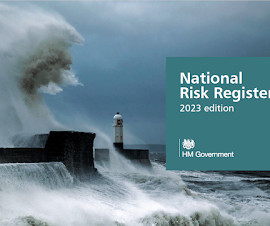The United Kingdom's National Risk Register - 2023 Edition
Emergency Planning
AUGUST 3, 2023
The new version presents 89 major hazards and threats that could potentially disrupt life in the United Kingdom and possibly cause casualties and damage. It makes sense to enunciate the major risks that a country faces so that all citizens can be clear about what needs to be tackled in terms of threats to safety and security in the future.






















Let's personalize your content